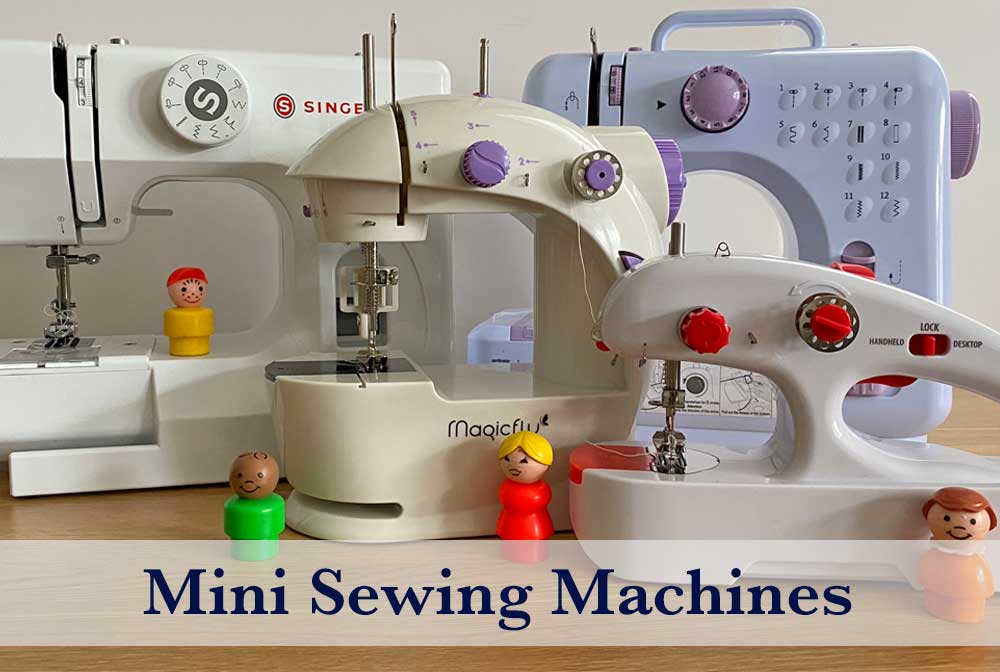
This post has affiliate links to products that I use and always recommend. You can buy them from anywhere but if you buy through the link (and Amazon) I receive a tiny percent back from that mega-retailer to help support this blog. Just letting you know 😉
I confess Mini Sewing Machines brought out the sewing snob in me. My initial reaction was, “Why waste your money? It’s just a toy.”
But there are good reasons you might want to buy one
- You are interested in sewing but you don’t want to spend too much money up front because you’re not sure you’re going to really like sewing.
- You just want to mend a few items of clothing and or make some pillows or curtains or something simple for your space.
- You already know that you want to sew garments or quilts. You’ve tried it on a relative’s machine or taken a class and you are wondering if these affordable mini machines can do the job.
I bought four mini sewing machines at different price points from $25 to $100 and ran some tests on them; common sewing tasks with different fabrics to see how well they would do.
The Machines
These machines were selected based on reviews, features for the cost, and in the case of the Singer machines, brand name.
- Singer Stitch Quick+ $25
- MagicFly $40
- Doyner $63
- Singer M1000 $99
Watch “Mini Sewing Machines: Worth It?” for the features of each machine and the results.
The Test
First test – Winding a Bobbin
How easy or difficult winding a bobbin is and how well the thread is wound onto the bobbin. Does it have good tension, it isn’t loosely wound on and is the thread distributed evenly onto the bobbin spool
Second Test – Threading the machine
How easy or difficult threading the machine is because you will do this a lot
Third Test – Noise, Rattling, and general sewing conditions:
How noisy and how stable is the machine? And how well does it work?
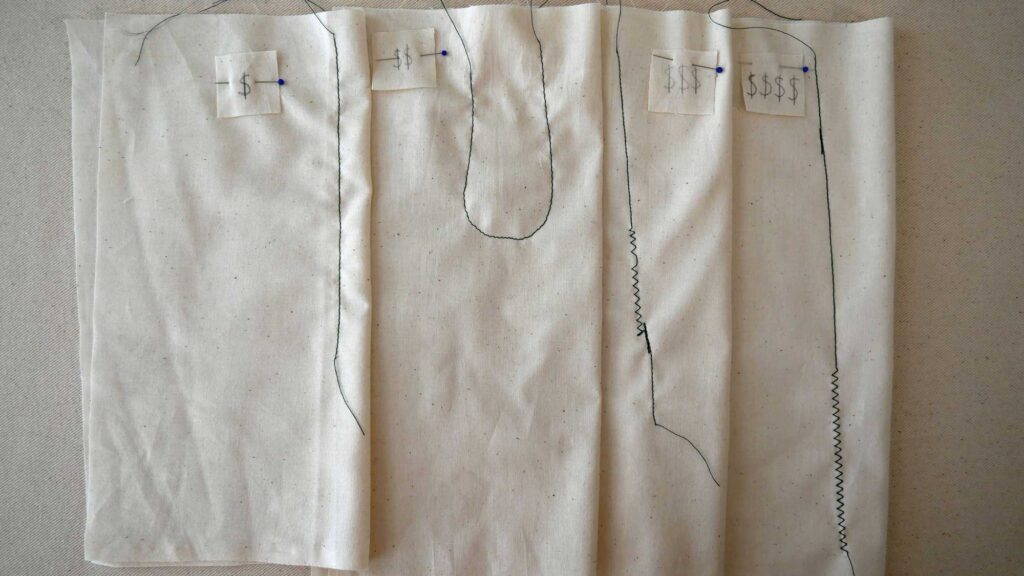
Fourth Test – Stitch Formation
How straight the individual stitches are and that the length of each stitch is consistent?
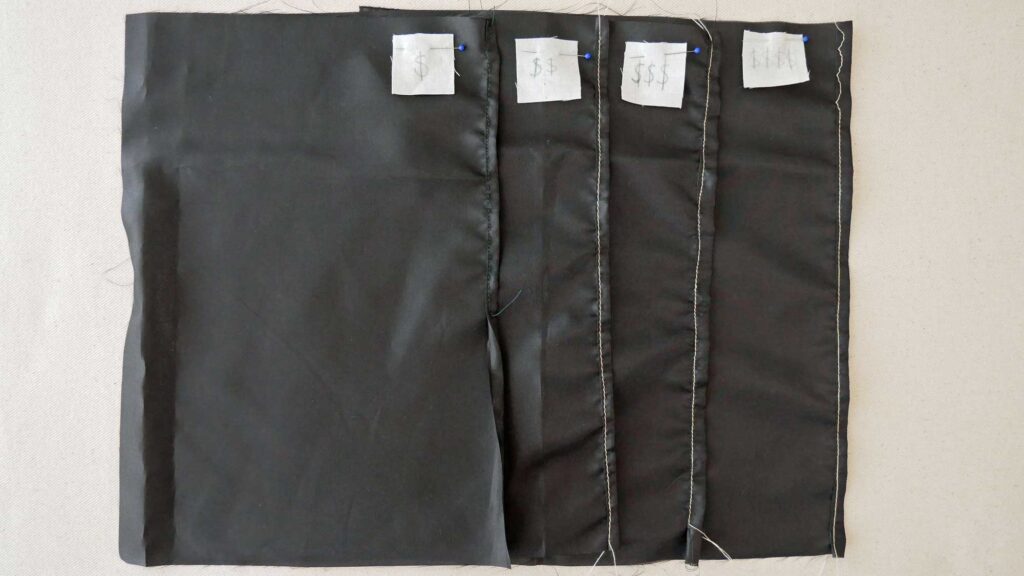
Fifth Test – Narrow Hem on lightweight fabric
Can the machine sew a narrow hem on the lining fabric without eating it or pushing it under the throat plate?
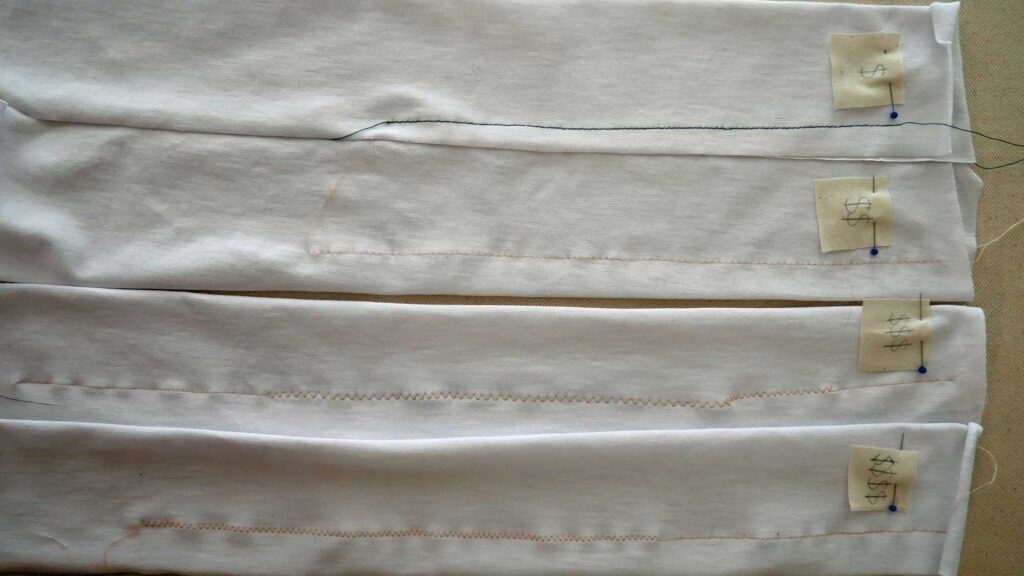
Sixth Test – T-shirt knit fabric
How wavy or puckered is the fabric after sewing a seam? And can the fabric still Stretch without popping a stitch?
Puckering and a wavy look to the fabric happen because the feed dogs under the fabric and the presser foot on top of the fabric are not feeding the fabric evenly under the needle. It happens more with stretch fabric and some of it will go away with a good pressing.
High-end machines have a walking foot (usually sold separately) that eliminates uneven feeding of the fabric.
I expect some waviness from all of these machines
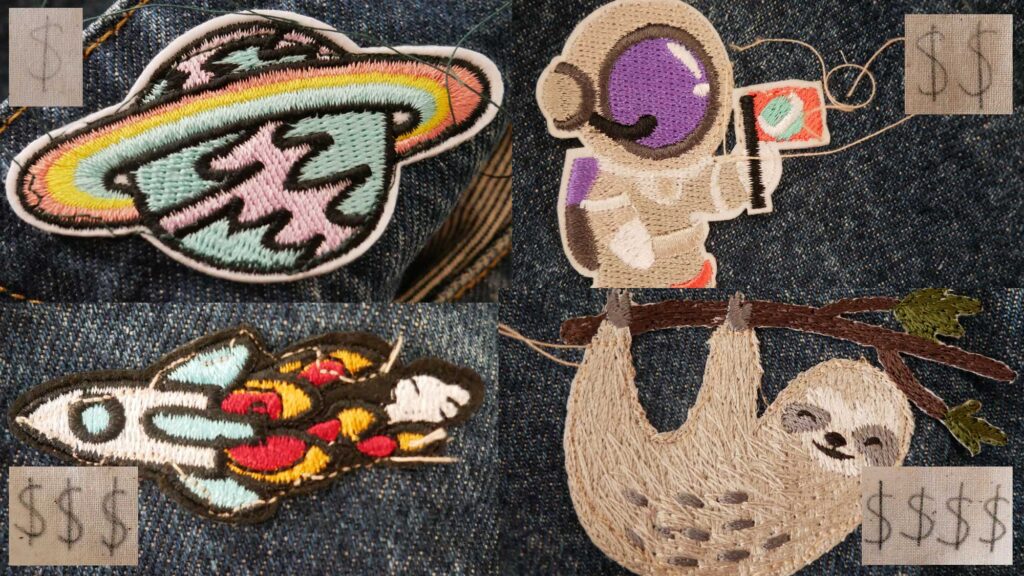
Seventh Test – Sewing a Patch onto a jean jacket
There are three tests here:
- Can the machines handle the thickness of denim fabric AND a patch? All of the patches for this test are from the same brand to be sure they are all the same thickness.
- How well can the machine maneuver around the shape of a patch?
- Can the machine accommodate the jacket as you move it under the needle?
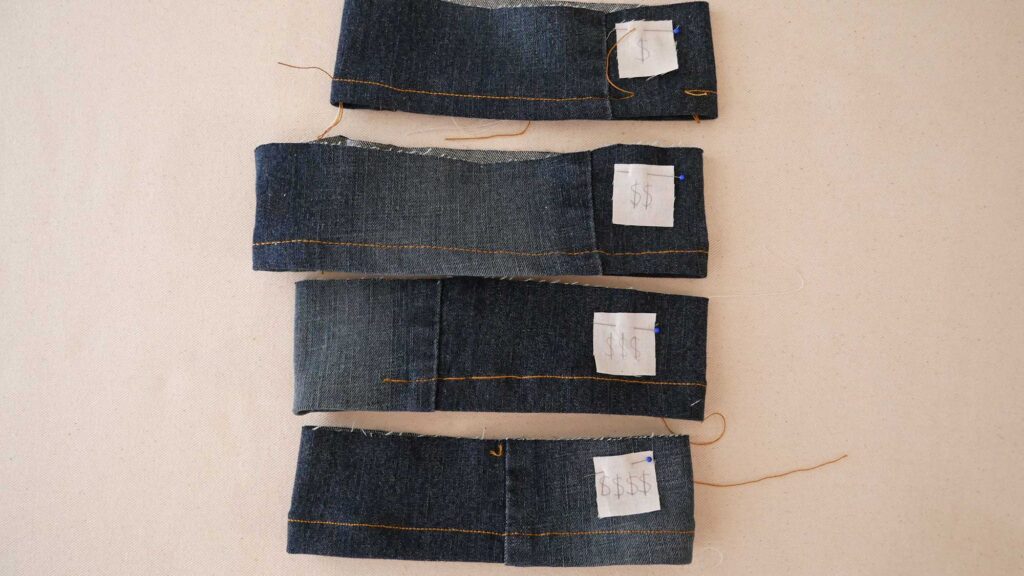
The last and eighth Test – Hemming Jeans with topstitch thread
I think hemming jeans or some similar heavy fabric is something everyone will do at least once. So can the machine handle 3 layers of denim? Can the machine handle topstitch thread which is a thicker thread than all-purpose thread without shredding the thread or getting tangles of thread on the backside?
Going over the thick side seams of jeans when hemming is always a problem even with high-end machines. Normally you would use a seam jumper and switch from the machine’s power to manually turning the handwheel to get through the bulk.
Watch how they did
Which Mini Sewing Machine should you buy? Well aside from the test results, go back to the reasons you might want to buy a machine and for all of the reasons I would say buy the best machine you can afford.
The Singer M1000 would be the only one from this group that I recommend, even with its faults it’s better than the rest across 7 of the 8 tests.
If you choose a cheaper machine you’re going to become frustrated when you sew. Even though the stitches are great on the Singer Stitch Quick+, the Magicfly could sew knits, and the Doyner has a buttonhole feature there are so many other problems and/or lack of features that you won’t like sewing and actually it’s the sewing machine that is robbing you from the ease and joy of even simple projects.
Buying a sewing machine is paying upfront even when you’re uncertain how much the machine will be used. I know many women who bought or were given a basic, but well-made, sewing machine when they were younger. They didn’t use it much at the time but they have rediscovered it decades later, and are now quilting, crafting or sewing garments. A good machine will wait for when you are ready, or can be sold to someone else. You will not be able to resale a cheap machine, as it will probably be in the trash in a year.
Basic machines (anywhere from $130 to $400) will have accessories like a zipper foot and an invisible zipper foot which you have to have to put in a zipper by machine.
A mid-range machine (around $600 to $900) will last most folks a lifetime (Or 25 years if you sew almost daily like I did on my 1990 New Home, RIP). They are built to last, have a better stitch quality, and come with more features.
I know a sewing machine is a lot of money up-front but if you buy one of these mini sewing machines you will likely grow out of it too fast. Think of your machine as cost per use. The more you will use the more you can consider spending. Of course, After a certain level, what are you paying for but the name brand?
Good Basic Sewing Machines
- Brother A former student had this model. She abused it but it still kept working.
- Bernetta
- Singer A current student has this model. No complaints.
Good Mid Range Sewing Machines
- Juki
- Neechi
- Viking
My machines
- Viking Huskystar 224 This was my mother’s. She never loved it like she loved her old Pfaff but it works.
- Bernetta 35 This is for my students to use and for when I take a class
- Bernina 580 This is my every day machine because I paid too much for me not to use it every day
- Bernina (from 1980’s) I bought this from a friend who was giving up sewing. All metal and so heavy.
- Brother Innovis This is more of an embroidery machine generously given to me by a friend after her mother passed away. It was her mother’s machine.
On my wishlist; An industrial straight stitch machine. Singer or Juki. These machines only do one thing but they do that one straight stitch better than any home machine plus they practically purr when doing it.

